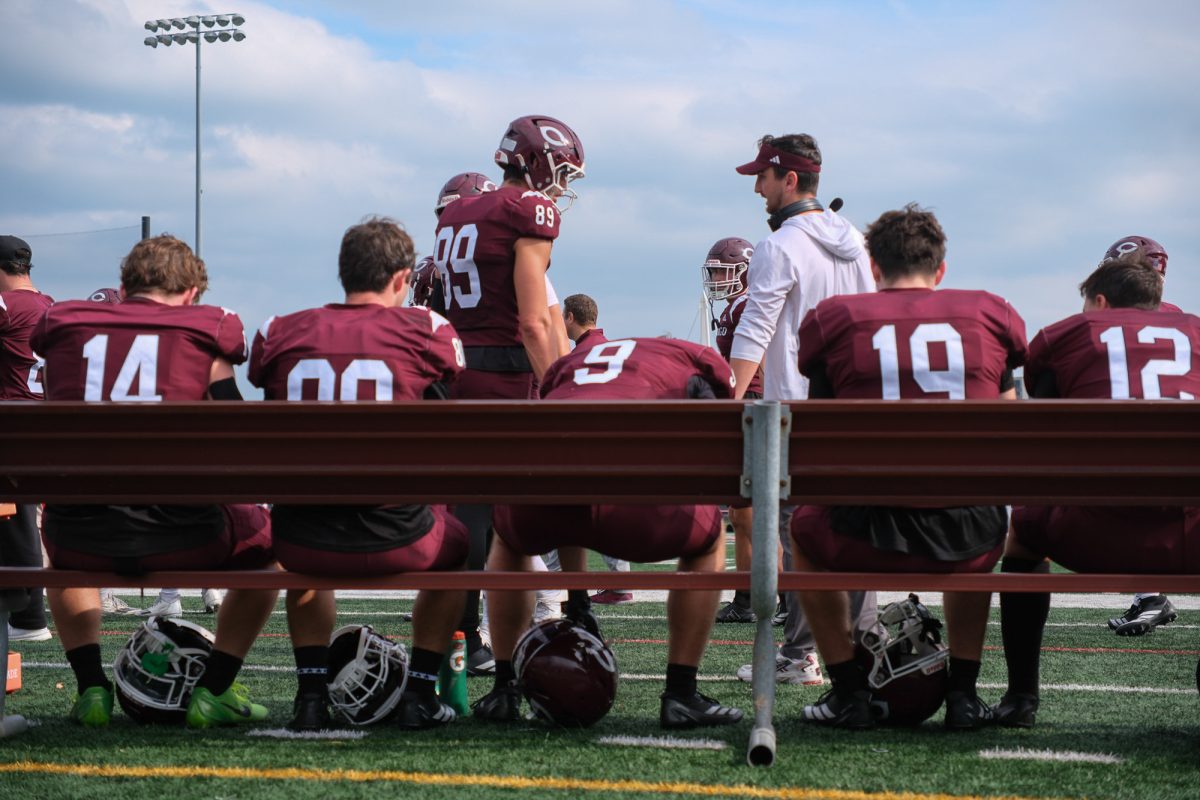[img id=”80418″ align=”alignleft”] On the second floor of Henry Crown, the baseball team is warming up for spring. Above it, in space cleared by pushing back the bleachers, another Chicago team is also practicing.
At one point one of the strongest varsity programs, fencing has been keeping up the pace of its former glory at the University as a club sport.
“Once I started, it was really hard to stop coming to practice,” team president and third-year Gabriella Grisotti said. “It’s much more advanced technique-wise [than high school], and we travel all over the Midwest.”
Most recently, the squad crossed blades with the D-I and varsity competition at the Midwest Fencing Conference Championship hosted by Notre Dame February 23–24. Ohio State, which is sending the maximum number of competitors to Nationals, claimed top honors at the tournament, followed by Notre Dame, the 2004 NCAA champs, and Northwestern, the chief rival on the men’s side, which earned the bronze.
“Notre Dame recruited the top male foilist in the country for its freshman class next year,” said Grisotti of the level of competition the club faces. “Once in a while we win a bout, not a whole match, but certainly some of our individual fencers can give some of these Division-I fencers quite a run for their money.”
Chicago proved worthy of the challenge, though, taking 6th out of 19 teams to improve on last year’s night-place finish. Not bad for a group of mostly novice fencers with only a part time coach.
“It’s always been the third- and fourth-years who know fencing really well that teach the beginners, passing the knowledge from student to student,” third-year team captain Alex Fix said.
Most members come in with little or no previous experience fencing. Grisotti competed in high school, but she seems to be the exception rather than the norm. Most rookies sign up for the club at the RSO fair at the beginning of the school year and need a crash course in the sport’s basics.
After getting a demonstration of the three weapons in fencing—the épée, sabre, and foil—the newcomers get to choose which one they’ll practice. Each has a different style derived from its original uses on the battlefield. The sabre, for instance, comes from the cavalry and sets the target above the waist because aiming for the legs endangered the horse that could be captured by the victor.
Their weapon selected, new fencers spend their first few weeks learning the footwork and then start on blade work. It takes awhile until they’ll get to say “En guarde,” but by the time they’re an upperclassman like Fix, it will be their turn to become the masters and teach the rookies.
“The third- and fourth-years who have been doing this for three or four years now will teach us, and really enjoy teaching us,” said first-year Ben Schapiro, who picked up the sabre last fall.
Interested people can schedule an individual lesson with coach Bakhyt Abdikulov, who comes to practice twice a week. Every once in a while he’ll lead the first half of practice before everyone splits to their weapon groups, but for the most part, fencers work under the guidance of a teammate who watches their bout.
These days the club is busy preparing for the Collegiate Club Fencing Championships held by Smith College April 5–6. Between finals coming up and then spring break, it’s going to be tough to make the two-hour practices Monday through Friday. As a club rather than a varsity squad, there’s also no way to compel attendance.
The varsity question is a tough one for team leaders like Grisotti and Fix. Fencing at the University goes back to its founding in 1892 as one of the complements to the ideal Renaissance students. It turned into one of the school’s athletic powerhouses, winning seven Big Ten Championships between 1930 and 1941.
Along with team dominance in the Midwest, several Maroons went on to earn All-American and Olympian status. Even when the University cut other varsity programs mid-century, fencing remained, along with gymnastics. It wasn’t eliminated by the athletic department until 1996.
The sport reemerged on campus as a club in 1998 and continued to take on its Big Ten foes like Notre Dame and Ohio State. Although it’s intriguing to think of the team’s potential with a full time coach and demanded practice attendance, most members aren’t willing to give up the vibe they’ve built up as a club.
“It’s sort of the question in the back of everyone’s mind,” Fix said. “Do we want it to be really friendly…or do we want it to be like we’re really trying to place at tournaments. I’m really happy with the way things are going now. We’re able to do both.”








